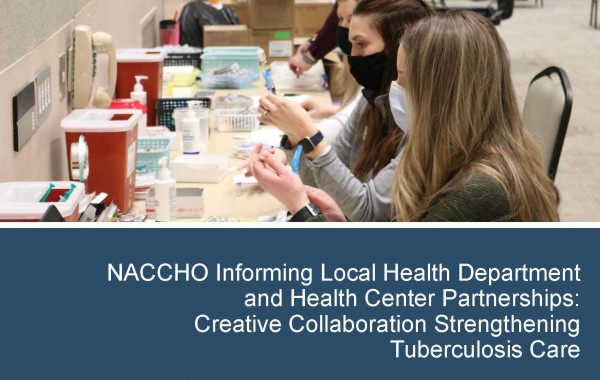Tuberculosis (TB) is the leading infectious disease killer, claiming 1.5 million lives in the world each year. In the U.S., a total of 7,163 TB cases were reported during 2020 (2.2 cases per 100,000 persons), 20% fewer than during 2019 (2.7 cases per 100,000 persons). Thirty-nine (39) states and the District of Columbia reported a decrease in cases, eight (8) states reported an increase, and three (3) states reported no change. The steep decrease in TB incidence during the COVID-19 pandemic is thought to be the result of reduced transmission and undetected cases.1 The World Health Organization (WHO) estimates a drop in TB program duties that was attributed to TB staff being reassigned to COVID-19 related duties, reduction in the number of healthcare facilities treating people with TB, a decline in data collection, diagnostic testing services used for TB shifting to COVID-19 testing, and the shifting of budgets to pay for COVID-19 response activities.2 While COVID-19 response efforts are impacting TB services, stakeholders continue to take measures to mitigate the impact while maintaining essential services. Local health departments (LHDs) are on the front lines and work closely with health centers (HC) in their jurisdictions to meet the needs of their communities and prevent and control infectious diseases such as TB and COVID-19.
NACCHO, with support from the Health Resources and Services Administration (HRSA), conducted a series of interviews to identify how LHD-HC partnerships pivoted during the COVID-19 response to provide services for both TB and COVID-19; identify the facilitators, drivers, and lessons learned within the LHD-HC partnerships collaborations during the COVID-19 response; and, inform on workforce development and capacity building in LHD-HC partnerships engaged in COVID-19 response, inclusive of impacts on TB prevention and control, and other services.
To share these insights and lessons learned, NACCHO developed a series of three Case Studies. Read the new 2021 case studies titled, Informing Local Health Department and Health Center Partnerships: Creative Collaboration Strengthening Tuberculosis Care, here.
Related Resources
This 2021 Case Study series builds off a similar Case Study conducted in 2019 to highlight innovative examples of health centers and health departments coordinating TB services and programs to improve screening, testing, treatment, and care. The original 2019 Case Study is available here.
In March of 2021, NACCHO hosted Tuberculosis Control Officer at Seattle & King County Public Health Dr. Masa Narita as well as Country Director with the CDC Division of Global HIV/AIDS in Zambia Dr. Simon Agolory. Both guests discussed World TB day and how the COVID-19 pandemic has impacted TB prevention and control efforts both globally and domestically. Listen to that episode here.
References:
1 Deutsch-Feldman M, Pratt RH, Price SF, Tsang CA, Self JL. Tuberculosis —United States, 2020. MMWR Morb Mortal Wkly Rep 2021;70:409–414. DOI:http://dx.doi.org/10.15585/mmw... icon.
2 WHO. COVID-19: Considerations for tuberculosis (TB) care. December 15, 2020 https://www.who.int/docs/defau...



